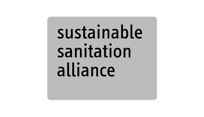Biogas produced from anaerobic digestion T.3 can be used at a household level for cooking and lighting. At larger scales, it can be used with various biogas-powered appliances such as cooking stoves, refrigerators, water boilers or radiant heaters for poultry or livestock farming. Biogas can also be converted into electricity by gas-powered generators.

Biogas from anaerobic digestion T.3 mainly consists of flammable methane. It can be used in cooking stoves, for lighting and can be converted to electricity for powering appliances. As a power source, a variety of biogas-powered appliances are market-available, including refrigerators and agricultural equipment such as radiant warmers for poultry and livestock farming. These biogas-powered appliances differ from other gas-powered equipment, as biogas is commonly supplied in an unpressurised form. The calorific value of biogas is around 6.0 – 6.5 kWh / m3, which corresponds to about 1 litre of diesel or 1.3 kg of wood. For cooking, 150 to 300 L of biogas are needed per person and meal, depending on the food and food preparation practices. The preliminary soaking of dry beans and other hard foodstuffs or using pressure cookers can reduce energy needs.
Design Considerations
How biogas is used is best defined by the existing access to energy and amounts of biogas available. Biogas produced in low-tech reactors T.3 is only available at low pressure and consumption should take place as close as possible to the reactor. Unpressurised transport with inflatable gas bags is possible but only conveys limited volumes. The volumes produced in humanitarian settings are commonly too small for bottling into pressurised cylinders or for using gas pumps for transport. At low pressure in pipes, moisture traps at low points are required to prevent clogging from condensed water. No biogas pre-treatment is necessary when it is directly combusted. If used in engines or generators, biogas pretreatment is required for the removal of water vapour and corrosive compounds such as hydrogen sulphide (H2S). This complex step makes it less applicable for humanitarian settings. While biogas generators might be directly used to power electric appliances, feeding into existing electrical grids, even mini-grids, is likely to be too complex for humanitarian settings.
Materials
The extraction and use of biogas requires pipes and valves. The piping system connects the biogas unit with the gas appliances. Galvanised steel (GI) pipes, polyvinyl chloride (PVC) pipes or polyethylene (PE) plastic pipes are most often used for this purpose. Pipe diameters depend on the required flow rate of biogas through the pipe and the distance between the biogas digester and gas appliances. Biogas-powered stoves, lamps, appliances, engines or generators are all typically available to buy on the market. However, more specific or sophisticated appliances may require importation.
Applicability
The implementation of biogas reactors and the use of biogas are likely to be limited to stable conditions in protracted or development settings T.3. In households, biogas is most suitable for cooking or lighting. Biogas produced at scale in large anaerobic digesters at the community or institutional level can be used as a source of power or to generate electricity. Larger-scale biogas production is more likely in agricultural settings. Where sufficient organic waste is available, the digestate can be used for fertilisation and the biogas for various kinds of agricultural equipment.
Operation and Maintenance
Biogas is usually fully saturated with water vapour, causing condensation. To prevent blocking and corrosion, the accumulated water must be periodically emptied from the installed water traps. The gas pipelines, fittings and appliances must be regularly monitored by trained personnel. If biogas is used in engines or generators, biogas pre-treatment is required to remove water vapour and corrosive agents. The following consumption rates in litres per hour (L/h) can be assumed for the use of biogas: household burners: 200-450 L/h; industrial burners: 1,000-3,000 L/h; refrigerator (100L) depending on the outside temperature: 30-75 L/h; gas lamp, equivalent to a 60 W bulb: 120-150 L/h; biogas/diesel engine per horsepower-hour 420 L/h; generation of 1 kWh of electricity with biogas/diesel mixture: 700 L/h.
Health and Safety
According to the World Health Organization, biogas is considered a clean cooking fuel with minimal emissions affecting human health. Operating errors or equipment failure can cause uncontrolled biogas accumulation. This risks sudden ignition or an absence of oxygen in natural or built depressions. As biogas combustion consumes oxygen and generates carbon dioxide, fresh air ventilation must always be ensured. Households must be adequately trained to use biogas household devices (stoves, lamps). Staff using biogas-powered appliances and generators must be trained in occupational safety.
Costs
The cost depends on the type and number of selected biogas-powered appliances. The cost of gas piping and all auxiliary equipment of the reactor, such as water traps, are generally included in the cost of the biogas plant. Biogas cooking stoves are inexpensive and widely available. More sophisticated biogas-powered appliances, such as agricultural equipment, are much more costly, may need to be imported and can increase operational costs due to maintenance needs.
Social Considerations
In general, users enjoy cooking with biogas as it can be immediately switched on and off (as compared to wood and coal). Using biogas as fuel relieves women and children from the challenging responsibility of gathering firewood, thereby reducing their exposure to potential protection-related risks. Training and orientation on biogas production, safety and piping should be given to support user acceptance, ensure efficient use and maintenance of the stove and facilitate rapid identification of leakages and other potential issues. Depending on social and cultural norms, users might reject cooking with biogas produced from waste. Concerns about safety may also inhibit acceptance; projects should demonstrate to users that biogas is not dangerous (due to its low concentration of methane). The production and use of biogas can partially reduce dependence on other fuels and contribute to a community’s self-reliance.
Key Decision Criteria
Input Products
Biogas
Response Phase
Application Level
Management Level
Space Required
low
Technical Complexity
medium
Objectives & Key Features
Biogas for cooking/lighting, Productive use or generation of electricity
Strength & Weakness
- Fossil-free source of energy
- Independence from external sources for energy supply
- Reduction of indoor air pollution and deforestation
- Little operational skills or maintenance is required
- May not fulfil the total energy requirements thus requiring a backup system
- Can’t replace all types of energy
- Can’t be easily stored (low energy density per volume) and hence needs to be continuously used






